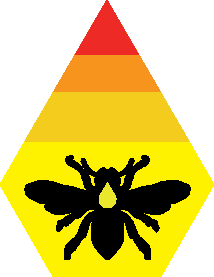Wild Pollinator Count 2016
The new count is in spring and will run from 13-20 November 2016.
Australia has lots of wild pollinator insects that are often overlooked. European honey bees get a lot of attention because they are an adaptable, generalist forager, which means they are happy to visit almost any flower, in most climate zones. They are also a social species, so their hives are easy to domesticate and manage.
However, many native insects also contribute to pollination in crops and gardens all around the country. We still need to do a lot of research to identify all our pollinator insect species, understand their ecology and how they are affected by human activities. So far, we know thatAustralia has around 2,000 native bee species, all of which are important pollinators. We also know there are a couple of thousand butterfly, wasp, fly, moth, beetle, thrips and ant species, some of which are documented pollinators. Unfortunately, we don’t have a lot of information on the ecology of many of these insects, what flowers they pollinate, or where they are found.
The Wild Pollinator Count gives you an opportunity to contribute to wild pollinator insect conservation in Australia. We invite you to count wild pollinators in your local environment and help us build a database on wild pollinator activity.
You can join in by watching any flowering plant for just ten minutes sometime in our count week.
- You don’t need to be an insect expert.
- You don’t need fancy gear.
- You may be surprised by what you see!
Find out how to count pollinators, identify the insects you see and submit your observations through the links at the top of the page. You can also download our Run Your Own Count kit and organise to count with a group.
If you have any questions or comments about the count, please email WPC at wildpollinatorcount@gmail.com.




